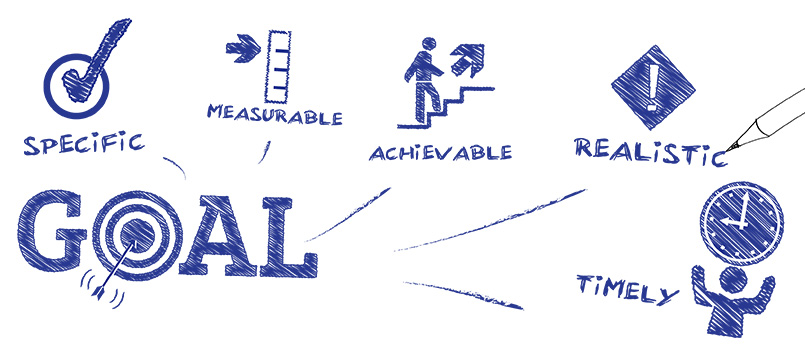Whether you’re running a small local business or a Fortune 500 corporation, you need a social media presence. Social media usage is on the rise for internet users, and there is no sign that this is going to slow down. However, social media users are becoming pickier about the type of content that they are consuming on these platforms. This change makes it more difficult for businesses to provide their social audiences with the content they want.
If your business is active on social media, then you need returns on your efforts. Not being able to convert social media users into paying customers is one of the biggest frustrations that businesses have. If you’re having trouble getting conversions from your social media accounts — we’re here to help.
So, if you want to know what the biggest mistakes that business makes that limit their conversions are, we have the answer. Even better — you’ll find the answers to resolving these issues below.
Common Social Media Marketing Mistakes and Their Solutions
Let’s now discuss six common social media mistakes and how you can avoid them in the future.
Mistake #1: You Don’t Have Clearly Defined Goals

This is one of the biggest mistakes businesses make with social media, which is why it comes first. Only using social media is not enough: You need to have a plan. If you’re creating content for social media for the sake of creating content — you’re not going to get the returns your business needs. Without a plan, you likely can’t even define what returns your business needs.
Social media goals hold you accountable, give your online marketing efforts structure, and encourage you to get the most out of your campaigns. Not having goals for social media would be the same as not having an overall goal for your business — and leads to a microcosm of the same disastrous results. Without goals, your success remains undefined, making success on social media is unlikely.
How you Can Fix it: Be Zealous About Your Goals.
Creating goals for social media starts with understanding what the common goals are and how you can achieve them. Typically, most businesses use social media to build brand awareness, connect with their customer base, generate more leads and sales, and/or drive traffic to their website.
If you’re just starting to develop your social media strategy, it’s often best to start with one of these goals, accomplish it, and then add more goals as you move forward.
Once you’ve chosen your goal(s), you need to conduct an audit to understand what you do well, what you can improve, what opportunities are available to you, and what threats could harm you. A practical method for this is a technique called a S.W.O.T. analysis. MindTools is an excellent guide to this technique if you want to familiarize yourself with it.
If a S.W.O.T. analysis isn’t the best fit for your business — Benchmarking may be the most effective way to audit your social media. With benchmarking, you simply review your social media efforts and compare them to those of other businesses in your industry. This method will help you determine what and where improvements are needed and how other organizations achieve their high-performance levels and then leverage this information to improve your performance.
After your audit is complete, it’s time to choose a framework within which you’ll be able to take steps to achieve your goals. A framework is a system that simplifies your goals and sets actionable steps you can take to meet and measure your goals.
Some good frameworks include:
-
- S.M.A.R.T. Goals: S.M.A.R.T. is an acronym that stands for Specific, Measurable, Achievable, Realistic, and Timely. Using this framework, you’d develop unambiguous, relevant, and attainable goals. Once you have chosen your goals, you establish a system of measurement which you observe over a predetermined amount of time. For details on S.M.A.R.T. Goals, I recommend this guide from SmartSheet.
-
- Objectives and Key Results: Commonly called O.K.R., organizations that use this framework set an objective, assign it a metric (or key result) to measure, and initiatives, or action steps, to achieve it. O.K.R. frameworks are meant to be simple and can change frequently. You can learn more about them with this tutorial from Perdoo.
-
- BSQ: This framework is essentially a philosophy. B.S.Q. sets goals by thinking Big, acting Small, and moving Quickly. With this framework, you set a grand goal, assign baby steps to achieve it, and achieve those steps as quickly as possible. Inc has a great write-up on this framework if you’d like to learn more.
We use S.M.A.R.T. Goals at Oyova and find that this method helps us to develop the best action plans and make better decisions. We highly recommend this framework to any business that has multiple goals on numerous platforms that may need to work simultaneously.
Once your goals are clearly defined, you’re able to move forward and begin to determine which platforms and content types are best for your business. This leads us to our next mistake.
Mistake #2: You’re Not Focusing On The Right Platforms.

No single social media platform appeals to the same audience. Likewise, every social media platform is nuanced and has subtle differences that set it apart from the other platforms. If you’re focusing on short, easily digestible content on Facebook, your audience may not engage with it. For instance: if you’re creating videos, posting them to your website, and sharing them on Twitter, you may be missing out on views that YouTube’s algorithm can provide. If your target audience is those over the age of 50, building an audience on Instagram is probably not your best option.
When you’re having trouble engaging with your audience, it is likely that you’re focused on the wrong platform.
How you Can Fix it: Understand Each Social Media Platform.
Understanding the uses, audience, and benefits – including their benefits to other digital marketing aspects, such as SEO – of each social media platform is crucial to your success with social media. With so many options out there — Facebook, Instagram, Twitter, LinkedIn, Snapchat, Tumblr, Pinterest, and many more — it can be tough to ascertain which platform to use. Having so many options is why it is so important to research and fully understand social media platforms before creating and running your campaigns.
We’ve compiled a quick reference guide to help you understand the more prominent platforms. However, we highly recommend you research and decide what platforms are best for you and your audience.
Notable Social Media Platforms Include:
 Facebook: Currently the largest social media site with just under over 3 billion monthly active users, with high numbers of users in all age groups reportedly using the platform. It is also the most rounded platform and gives most businesses the ability to grow an audience and share many different forms of content, with Visual Posts, Quizzes/Polls, Video posts, and infographics having the most success.
Facebook: Currently the largest social media site with just under over 3 billion monthly active users, with high numbers of users in all age groups reportedly using the platform. It is also the most rounded platform and gives most businesses the ability to grow an audience and share many different forms of content, with Visual Posts, Quizzes/Polls, Video posts, and infographics having the most success.  Twitter: Boasting over 528 Million monthly active users, Twitter is the best platform for businesses who want to be in on the conversations. Adult men make up a majority of Twitter users. Posts on trending topics, instructional videos, and retweeting user-generated content are some of the highest-performing types of content on Twitter.
Twitter: Boasting over 528 Million monthly active users, Twitter is the best platform for businesses who want to be in on the conversations. Adult men make up a majority of Twitter users. Posts on trending topics, instructional videos, and retweeting user-generated content are some of the highest-performing types of content on Twitter. Instagram: One of the fastest-growing social media platforms, Instagram’s audience is utilized mostly by teens and young adults. Instagram is a photo-centric social media and is notable for its ease of use. User-generated images, Live Videos, and story posts are the most successful.
Instagram: One of the fastest-growing social media platforms, Instagram’s audience is utilized mostly by teens and young adults. Instagram is a photo-centric social media and is notable for its ease of use. User-generated images, Live Videos, and story posts are the most successful. LinkedIn: The ultimate social media platform for business professionals, LinkedIn is perfect for businesses that offer Business-to-Business products and services. The demographics for this platform are split evenly between men and women in the 30-49 age group. A vast majority of users have a college degree and make over $75,000 a year. Sharing company information, informative long-form content, direct sales, and statistical infographics are the best content types to get the most out of LinkedIn.
LinkedIn: The ultimate social media platform for business professionals, LinkedIn is perfect for businesses that offer Business-to-Business products and services. The demographics for this platform are split evenly between men and women in the 30-49 age group. A vast majority of users have a college degree and make over $75,000 a year. Sharing company information, informative long-form content, direct sales, and statistical infographics are the best content types to get the most out of LinkedIn. Snapchat: This platform is likely one of the more difficult for businesses to use, but when used properly, it can significantly help your bottom line. Popular among a younger audience, Snapchat is perfect for companies that have teenage customers. Best strategies include influencer takeovers, direct promotions/discounts, and user-generated content.
Snapchat: This platform is likely one of the more difficult for businesses to use, but when used properly, it can significantly help your bottom line. Popular among a younger audience, Snapchat is perfect for companies that have teenage customers. Best strategies include influencer takeovers, direct promotions/discounts, and user-generated content. Tumblr: This microblogging platform is most popular among the 18-25 age group and is split evenly between women and men. As a microblogging platform, this is a great social media site for sharing product and business information in a long form. Reblogging — or sharing previously written content on a new platform — is very popular on Tumblr as well.
Tumblr: This microblogging platform is most popular among the 18-25 age group and is split evenly between women and men. As a microblogging platform, this is a great social media site for sharing product and business information in a long form. Reblogging — or sharing previously written content on a new platform — is very popular on Tumblr as well. Pinterest: The Virtual scrapbooking social media Pinterest allows businesses to “pin” images and products to their boards. This platform is used mostly by women in the 18-29 age category. It’s great for highly visual industries such as clothing, interior design, and art.
Pinterest: The Virtual scrapbooking social media Pinterest allows businesses to “pin” images and products to their boards. This platform is used mostly by women in the 18-29 age category. It’s great for highly visual industries such as clothing, interior design, and art.
Mistake #3: You’re Not Focusing On The Right Content On Social Media.
If your chosen social media platforms are right for your customer demographics, and you are still not able to engage with your audience — you may not be using the right types of content. A big issue that I see is with businesses that don’t have a balance with their social media content. You simply cannot continually promote your products or services and expect to have success with your social campaigns.
On social media, users want to build a relationship with the brands they love — not be inundated with promotions. While promoting is essential, it should exist within the context of a social media marketing strategy, not make up its entirety.
How you Can Fix it: Have Balance With Your Social Content.
I recommend having a mix of posts that are 70% curated content (such as industry news, outside expertise, blogs, and creative updates to help build trust in your brand), 20% brand information (this is company information such as achievements, news, and highlights of the company culture), and 10% for promotional or sales data (direct calls to action, promotional offers, and product information). This balance will help to keep your audience informed, engaged, and aware of your products without leaving them sick of being sold. This strategy will work to build a relationship with your customer base, making them feel like they are a part of your brand’s identity.
Using a content calendar is a great way to plan and ensure that you remain balanced. You can find an excellent guide and templates for content calendars from HubSpot.
Mistake #4: You’re Sending Social Media Traffic To The Wrong Place On Your Website.
Sending traffic from social media to the wrong page is a big mistake that many companies don’t realize they are making. When you’re posting content, primarily promotional content, where are you sending your users? If traffic is high but your conversions are low – you may want to reconsider the pages to which you are sending your traffic.
Simply put — the pages on your website likely are not optimized for your social media campaigns. They are likely broad, trying to catch traffic of all kinds and drive them to convert. This is good and how your general web pages should be. However, your social campaigns will suffer if you’re not using dedicated landing pages.
How you Can Fix it: Use Dedicated Landing Pages.

A dedicated landing page is a page on your site designed specifically to generate leads and sales from a specific marketing campaign. These pages help reinforce brand and product messaging, minimize distractions, track user actions for particular campaigns, and encourage action.
If you have an eCommerce website, sending your leads to a product page might generate a conversion. However, according to PinnacleCart, product pages “generally fail to trigger engagement, leading visitors to bounce at drastically higher rates and significantly fewer pages.” Conversion rates for landing pages are typically around 7-10%, making them excellent tools for driving sales.
Mistake #5: You’re Not Responding To Your Audience.
As stated previously, consumers want to have relationships with the businesses they follow on social media. If you’re not responding to comments and messages from your audience, you’re likely giving your audience the wrong impression. This bad impression can harm your customer service and overall credibility with your followers.
How you Can Fix it: Keep Up With Your Notifications.
Keeping a close eye on your notifications allows you to reply to all customer inquiries quickly. Your audience expects responses to negative feedback, questions, and exceptional feedback. Not doing so may leave them looking at your competitors to solve their issues.
According to American Express, 1/3 of customers would consider switching companies after just one instance of bad customer service. However, according to Ameya, 67% of customer churn is preventable if issues are resolved the first time they occur. Not only is it essential to respond, but you must reply with the empathy and humanity that your customers expect.
Mistake #6: You’re Not Testing.
So, you’re on the right social media platforms. You’re posting great, balanced, platform-specific content. You’re doing a good job responding to customer inquiries, and you’re sending your audience to dedicated landing pages. You certainly will see improvement in your social media performance if you’re doing these things — but if you’re not testing, you are forgetting a crucial step.
Testing is a great way to improve even further on your social media success. It helps you figure out what works and what doesn’t. With tests, you’re able to figure out if your audience prefers GIFs or Videos, whether they want a long blog post or an infographic. In truth, every business’s audience is different — even for those in the same industry. Testing is the best way for you to learn your audience’s preferences and deliver to them what they want.
How you Can Fix it: Always Try To Improve Performance.

Even if your social media’s conversion rate is improving — that’s no reason to rest on your laurels. Consistently testing is the best way to improve your social media performance and to understand the content that your audience wants. Your business will benefit from testing to learn how you can make better, data-driven decisions in the future instead of guessing what might work.
For best testing, I recommend the following steps:
-
-
- Conduct regular social audits. Consistently auditing your social media will help you understand what has been working for you, allowing you to continue using strategies that work. Likewise, — it allows you to identify areas of failure and avoid them as you move forward.
- Learn the best days and times to post content. The times when users are active on social media are the best times to post, such as between 12 and 1 PM and between 5 and 6 PM. Surprisingly enough, people tend to use social media a bit less on the weekends than they do during the week.
- Identify your key performance indicators (KPIs). These are metrics that indicate if you are meeting your objectives. Some good examples of KPIs are Impressions, Reach, Likes, Comments, Shares, and, of course, conversions.
- Test your messaging. Testing message variations can help to ensure that your messages are received consistently and adequately. To do this, test different ways to communicate the same message and see which way brings the best results. This testing can also differ from platform to platform.
-
Avoiding these mistakes and learning how to fix them is a great way to get started optimizing your social media conversion. Remember, above all, social media is about your audience. If you’re not providing them with the content that they want, they are unlikely to respond to the content you are creating.
Did these solutions work for you? We’d love to hear your feedback. Share the results of your new social media marketing campaigns with us on social media!
